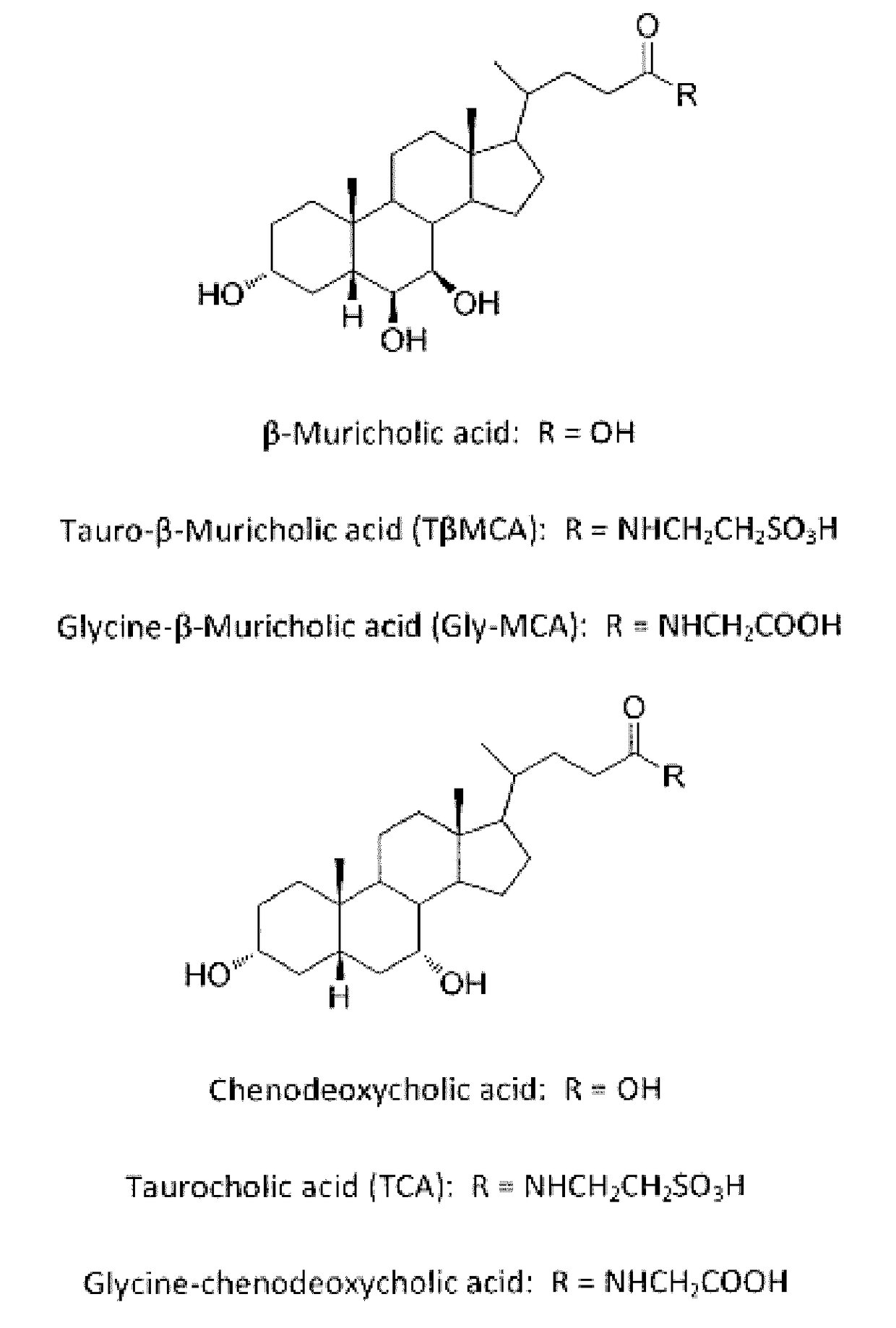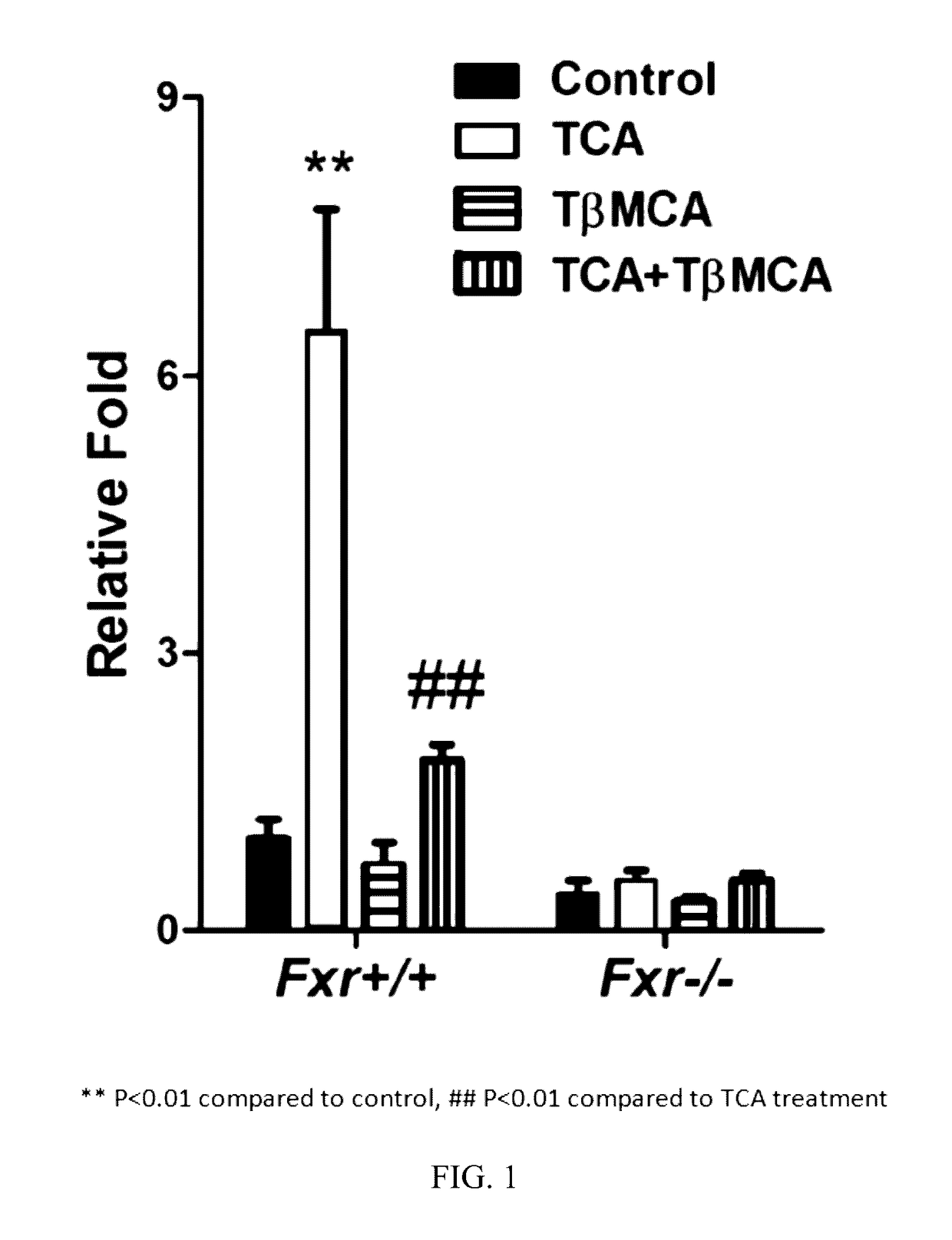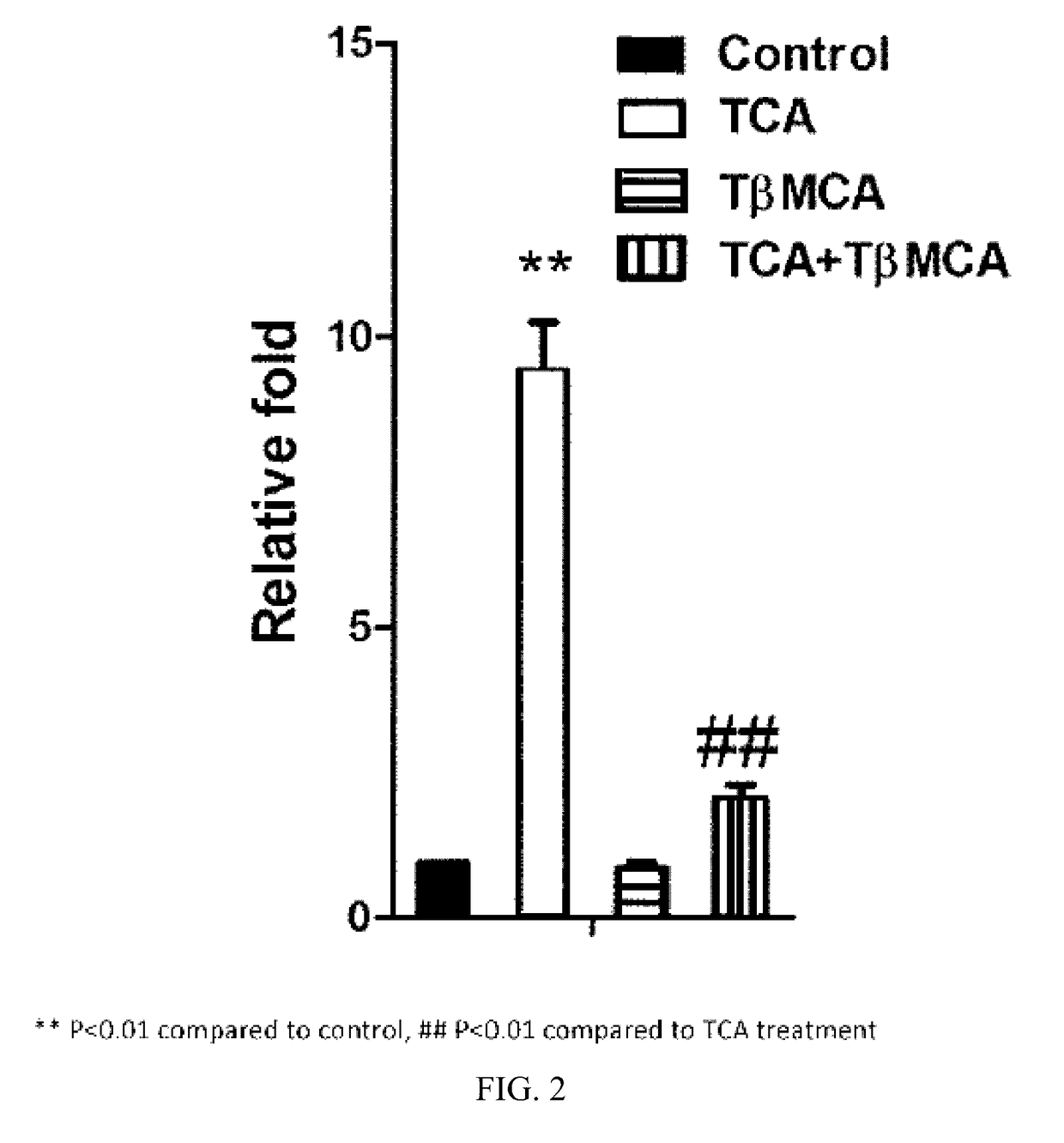Inhibitors of the farnesoid x receptor and uses in medicine
a technology of farnesoid x receptor and inhibitor, which is applied in the direction of steroids, organic chemistry, metabolism disorders, etc., can solve the problems of unsure nature of endogenous fxr ligand, and achieve the effect of minimizing systemic toxicity and minimizing systemic bioavailability
- Summary
- Abstract
- Description
- Claims
- Application Information
AI Technical Summary
Benefits of technology
Problems solved by technology
Method used
Image
Examples
example 1
[0339]This example demonstrates that tauro-β-muricholic (TβMCA) acid antagonized FXR activation by taurocholic acid (TCA) in primary mouse hepatocytes.
[0340]Primary hepatocytes from Fxr+ / + and Fxr− / − mice were transfected with PGL4-Shp-TK firefly luciferase construct and the control plasmid phRL-SV40. After 24 h, the cells were treated with 100 μM taurocholic acid (TCA), TβMCA, or TβMCA with TCA. The cells were lysed, and luciferase activities measured as describe herein. The results are depicted in FIG. 1.
[0341]As is apparent from the results depicted in FIG. 1, TβMCA antagonized FXR activation by TCA in primary hepatocytes from Fxr+ / + mice, but not from Fxr− / − mice.
example 2
[0342]This example demonstrates that TβMCA antagonized FXR activation by TCA in Caco-2 cells.
[0343]Caco-2 cells were transfected with PGL4-Shp-TK firefly luciferase construct, the control plasmid phRL-SV40, and human FXR and human ASBT expression plasmids. After 24 h, the cells were treated with 100 μM TCA, TβMCA, or TβMCA with 100 μL 100 μM TCA. The cells were lysed, and luciferase activities measured as describe herein. The results are depicted in FIG. 2.
[0344]As is apparent from the results depicted in FIG. 2, TβMCA antagonized FXR activation by TCA in Caco-2 cells.
example 3
[0345]This example demonstrates that ATP levels in mouse ileum mucosa were markedly elevated in FxrΔIE mice as compared to Fxrfl / fl mice after 14 weeks on a high fat diet.
[0346]Two separate groups of Fxrfl / fl mice and FxrΔIE mice were kept on a high fat diet for 14 weeks. ATP levels in the ileum mucosa of both groups of mice were determined as described herein. The results are depicted in FIG. 3.
[0347]As is apparent from the results depicted in FIG. 3, ATP levels in the ileum mucosa of FxrΔIE mice, which do not express farnesoid X receptor (FXR) in the intestine, were markedly elevated as compared with ATP levels in the ileum mucosa of control Fxrfl / fl mice that express intestinal FXR. These results indicate increased energy expenditure occurred in the small intestine in the absence of the nuclear receptor FXR.
PUM
 Login to View More
Login to View More Abstract
Description
Claims
Application Information
 Login to View More
Login to View More - R&D
- Intellectual Property
- Life Sciences
- Materials
- Tech Scout
- Unparalleled Data Quality
- Higher Quality Content
- 60% Fewer Hallucinations
Browse by: Latest US Patents, China's latest patents, Technical Efficacy Thesaurus, Application Domain, Technology Topic, Popular Technical Reports.
© 2025 PatSnap. All rights reserved.Legal|Privacy policy|Modern Slavery Act Transparency Statement|Sitemap|About US| Contact US: help@patsnap.com



